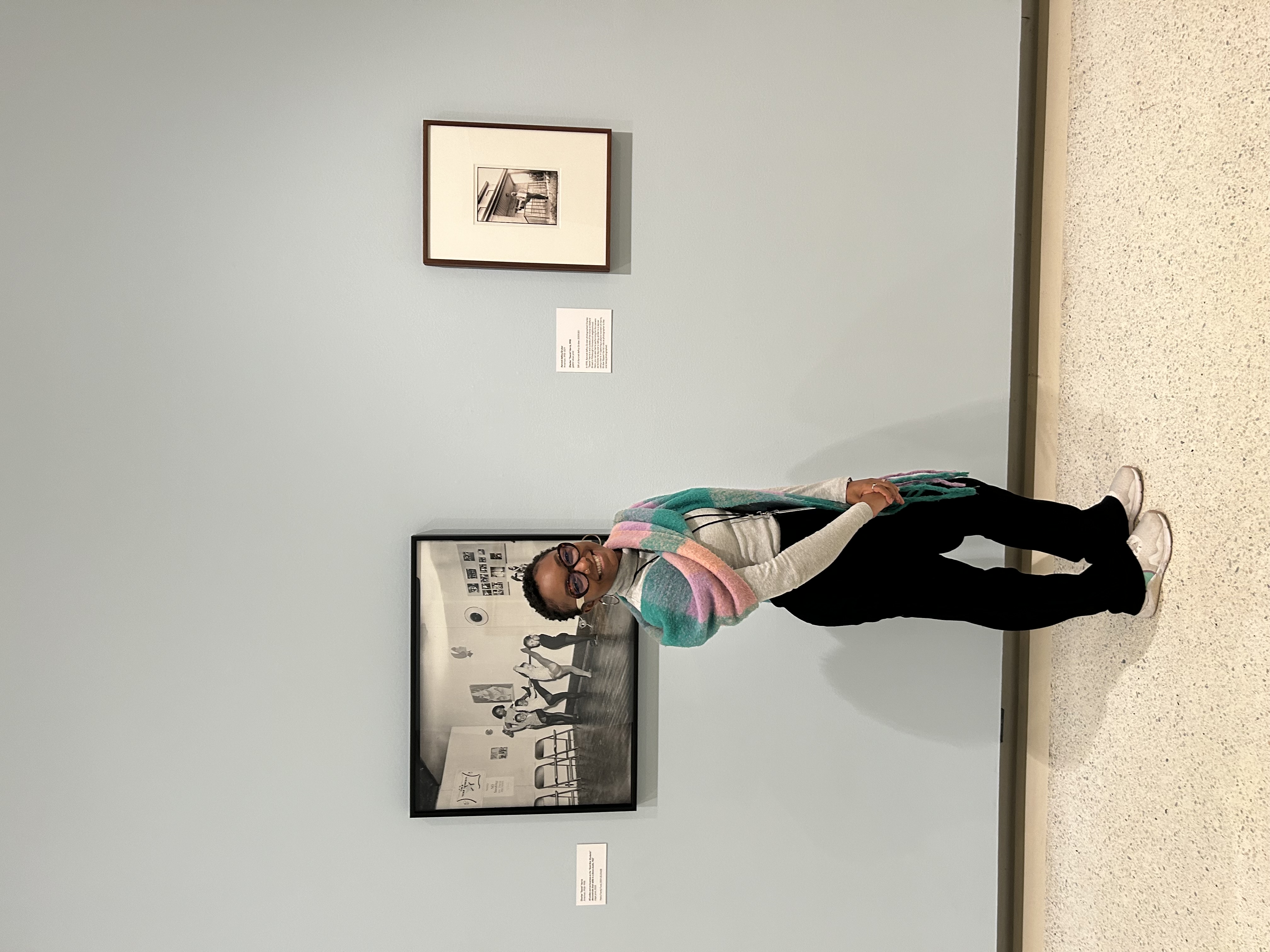Author: Tiffany Sims
Curating an exhibition is closely related to the art of dance in that choreography is fundamental to the creation of a body of work for an audience. Dancers are specifically selected, and so too are the artworks. Just as dancers are given a particular movement by a choreographer, a curator also ensures that artworks receive a designated space within the gallery. Dancers are embodiments of stories being told, possibilities being imagined, and music coming alive. As a former dancer and current mover, I have practiced dance through various techniques and choreographic work, as well as researched Black contemporary art and performance art. My research draws upon my dance background as a way to analyze historical narratives of the Black body in the African diaspora, centering an embodied, lived experience. Through the lens of Black feminist theory, I consider how artists and performers use the body, gestures, movement, and memory to call attention to race, racism, and the political dimensions of Blackness.
As the Margaret Powell Curatorial Fellow at Carnegie Museum of Art, I bridged my dance experiences and research into curation and programming. Dana Bishop-Root, Director of Education and Community Programs, gave me the opportunity to program my own Saturday for the museum's Summer program, Inside Out. At the time, I was thinking about the layered history of movement in the African diaspora—as a forced dispersal, a migration through the Underground Railroad and the Great Migration, and movement within the physical body as a means of survival. In my event, titled “The Possibilities of Movement,” I wanted to open up the Sculpture Court to the continuous movement of dance.
My colleague Reché Nelson who is a freelance dancer in New York City did a five-minute solo called Movement, based upon my own research but also past choreography from high school. Another colleague, Gianna Theodore and her friend Donovan Reed—currently in the A.I.M. by Kyle Abraham (a dance company in New York)—presented a fifteen minute duet titled “A loop of Circulating selves: Both Past and Present,” an investigation of the confrontation and communication between the past and present self, and what the conflicts, traumas, acceptance, and embrace of that might look like. A true coming back to self! Their duet used the whole sculpture court and interacted with audience members by repeating their movements. There were smiles, laughs, tears, and ultimately joy as a result of this Saturday. As the sculpture court is the outside extension of the museum, the activation of the space through dance brought a new level of understanding and appreciation for the continuous possibilities of movement in and outside of the galleries.
Inside the museum, my colleague Emily Mirales and I curated a gallery rotation for A Pittsburgh Anthology. This gallery is dedicated to the exhibition of artists and artworks with a connection to the city of Pittsburgh. Through our research process, we explored the ideas of movement, social dance, and community. Dance is both an encounter and a gathering, from rehearsed choreography to improvised movement. Through public and private spaces, dance brings people together, but also gives the body its own expression. We landed on a total of five selections from the Charles “Teenie” Harris archive which capture scenes of joy and togetherness. In one image, teenagers are seen in interior spaces dancing close and intimately; in another, people are watching a couple dance in a club; and another shows a multigenerational gathering in a barn while a band plays in the background. Emily and I were intentional about printing larger exhibition copies to invite our visitors to do close looking and to take a step back. This step back is also a type of time travel of stepping into the position of Harris as the photographer. Taking his stance within each scene, the visitors are able to step into his shoes. The inclusion of Aaronel deRoy Gruber’s photograph titled Charles “Teenie” Harris, 1998, shows 90-year old Harris performing for the camera, as he kicks his leg over a railing outside of his home in Homewood, Pittsburgh. Now Harris is in front of the camera– the perspective has shifted and he is being photographed. Emily and I offered new descriptive titles for each photograph. Typically, the museum uses descriptive titles for objects that enter the collection with no title. The titles of photographs in the Charles “Teenie” Harris Archive generally identify names of depicted individuals, places, and occasions.
The way in which dance has taken form within Carnegie Museum of Art has been an exuberant experience to share my love and return to dance with a wider audience. I am excited to see how dance continues to live through my research and practice.
Tiffany Sims, Margaret Powell Curatorial Fellowship at Carnegie Museum of Art and former Hot Metal Bridge Post-bac Fellow

